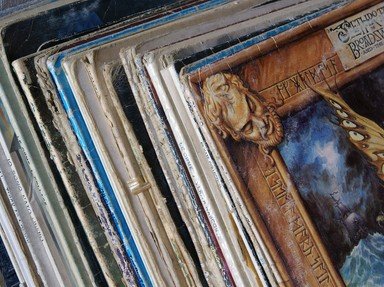Quiz Answer Key and Fun Facts
1. This 1966 studio album by The Beatles was their first to break with the tradition of simply having photographs of the band adorning the album cover. A collage of small photographic images were incorporated into and arranged around line drawings of each member of the Fab Four on which album cover?
2. Gimmicks are often used to boost sales of a product; sometimes they work, sometimes they don't. The latter was true for the 1967 self-titled 'The Velvet Underground & Nico' which failed to make any great impact despite featuring what novelty item on early pressings of its album cover?
3. Released in 1968, Big Brother and the Holding Company's 'Cheap Thrills' showcased the brilliant vocals of Janis Joplin. The comic strip styled album cover on the other hand showcased the artistic talent of which notable figure of the underground comic scene?
4. The graphic art team known as Hipgnosis created scores of album covers for some of the biggest, and not so big names in rock from the late sixties through to the early eighties. Their first design was the cover for 1968's 'A Saucerful of Secrets', the second album for which band?
5. Before providing the artwork for his own 'Self Portrait' (1970) and 'Planet Waves' (1974) album covers, Bob Dylan was also responsible for the painting that appeared on the cover of 'Music From Big Pink', the 1968 debut from which long time Dylan collaborators?
6. When Frank Zappa approached artist Neon Park to create the artwork for The Mothers of Invention's 1970 release 'Weasels Ripped My Flesh', the result was an amalgamation of a real cover from a magazine for men and a real advertisement for what type of gentlemanly product?
7. Money can be saved and artistic control can be kept in your own hands by creating the artwork yourself. Which folk rocker did just that for many of his own albums beginning with a drawing of a dented metal rubbish bin on the cover of 'Mona Bone Jakon' in 1970?
8. Really don't mind if you sit this one out, but in 1972 Jethro Tull released what frontman Ian Anderson described as "the mother of all concept albums", 'Thick as a Brick.' The original album cover was a mock-up of what type of reading material?
9. Many album covers have created controversy upon their initial release leading to them being edited for future pressings. Which 1974 David Bowie album suffered such a fate following objections to the half-man/half-beast painting of Bowie that appeared on its cover?
10. The KISS principle, that is Keep It Simple, Stupid, was adhered to for the cover photography for the 1975 debut album for Patti Smith 'Horses.' Who was it that shot this simple yet striking photo?
Source: Author
Aussiedrongo
This quiz was reviewed by FunTrivia editor
kyleisalive before going online.
Any errors found in FunTrivia content are routinely corrected through our feedback system.

